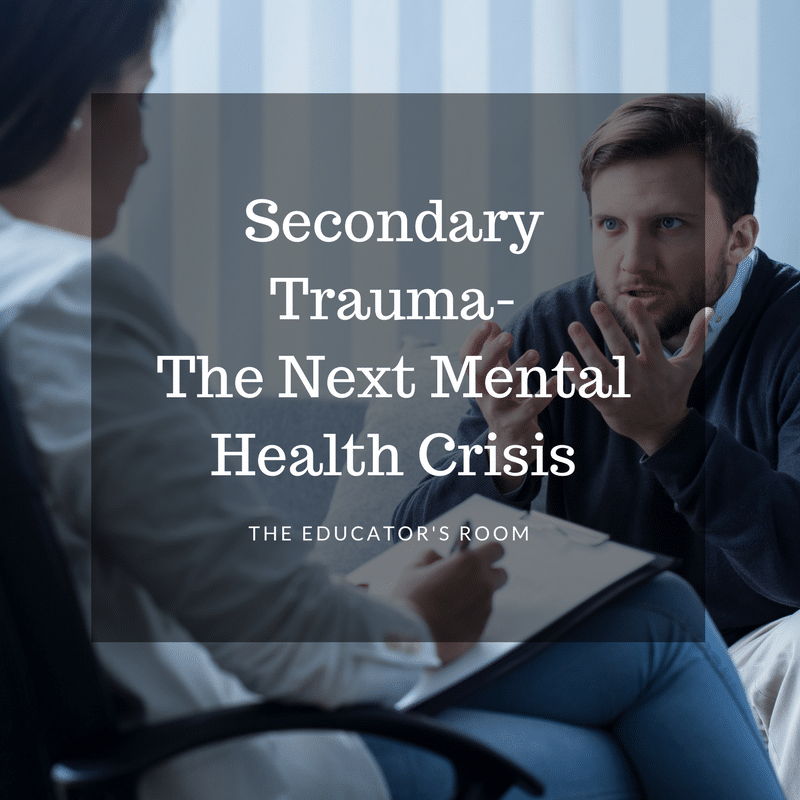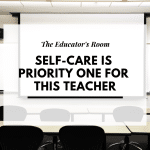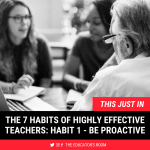“My family is still living in the domestic violence shelter and I don’t think Santa is going to find us there,” said the child. “Why do you think that?” queries the teacher sadly. “Mom said so. She said not to expect him to find us.”
[bctt tweet=”My family is still living in the domestic violence shelter and I don’t think Santa is going to find us there” username=””]
So what do we do as teachers when a child tells us this? Fortunately, the teacher in my school who spoke with the student above finished a box of Kleenex, then got busy on Facebook and raised $800 for the family of three children and the mom to have an amazingly blessed Christmas. This situation was actionable to the visionary teacher, but how many times in a day do we see those situations where we are helpless or hopeless?
My school is a Title I funded facility, receiving approximately $300,000 annually to compensate for the poverty in which students exist. However, to a child living in a hotel with six people to a room, three to a bed, what can I as a teacher do except worry and pray? I take these children home with me in my thoughts and prayers every night, as I am sure you do as well because we cannot actually take in them all-even if we wanted to. As a teacher, I plan for their reading and growth. I fret over their lack of electricity or water, or even their surety that their parents will be there when they wake up. I listen to children cry or act out because mom or dad was arrested in the middle of the night for drugs or violence.
[bctt tweet=”How can this not affect us as teachers? ” via=”no”]
In searching the literature, it was interesting to note that scientists have studied those on the front line of trauma: firefighters, police, social workers, and psychologists extensively. However, there is little scientific study related to Secondary Trauma for teachers, who can spend their entire day listening to stories that will haunt their dreams. In fact, according to Dr. Bruce Perry of the Child Trauma Academy, Post-Traumatic Stress Disorder (PTSD) can occur solely based on the vicarious exposure to these Adverse Childhood Experiences (ACES).
So how do you, as a teacher, recognize when you are suffering from secondary trauma, and what can you do about it? Some of the symptoms of secondary trauma include a numb or non-responsive effect when presented with a situation that would ordinarily lead you to be compassionate. A person can only hear so much tragedy before shutting down emotionally. My mother is a nurse and has always sworn that Emergency Room personnel and first responders have a “sick and twisted” sense of humor related to their jobs. She claims that it is required to keep their sanity after repeated exposure to the horrors of humanity, death, and destruction.
So teachers may find themselves feeling emotionally non-responsive or numb when hearing about a child having no water in the home with which to bathe, flush the toilet, or cook. Our response to a dirty child wearing dirty clothes can shift from compassion to resentment or anger. Teachers may also withdraw from family, colleagues, or administration, limiting their access to assistance or an opportunity to vent their feelings and emotions.
Unexplained fatigue is another symptom of secondary trauma, leading to a lessened sense of actual or perceived work performance. This often leads to reduced morale and a fear or dread of going into the work environment. Not only does it become difficult to enter the classroom, but it can cause one to engage in self-destructive habits such as smoking, drinking, and stress eating. Flashbacks to the visions of the child’s stories can happen as well with an intensity that creates that trauma within one’s psyche. Confusion, disorientation, and memory lapses are also common in those experiencing secondary trauma. Overall, the depression and trauma symptoms can lead one to question their entire perspective on life and report lower life satisfaction ratings.
Another serious implication of the numb and non-responsive effect is that teachers will take children’s behavior personally, internalizing the acting-out behavior that so frequently occurs in children with ACEs. When we feel like a bond has been established with a child in crisis from trauma, we expect that child to behave in a positive way towards us. When they do not, we do not understand why the child cannot trust us or perform appropriately. After all, we are in this together. You know their secrets and listened carefully while they poured out their heart.
[bctt tweet=”However, the perspective of a child going through trauma might be skewed.” via=”no”]
The worst thing a teacher can do is take behavior personally. Just because you feel that you have made headway towards building a relationship with a child does not mean that the child is ready to trust or heal. The crisis is ongoing for that child, and trust does not come easily. Just because you as the adult feel that the relationship is strong does not mean that the child can make a change quickly.
So how do we combat this secondary trauma while still serving these poor, unfortunate souls we love so much, and do it with excellence? As with any problem, becoming aware of the need is primary and then activities that build relationships among the school committee. Our school has a Wellness Committee that spearheads activities and off campus bonding time to allow us to blow off some steam with others who fully understand the situations. Next weekend, our team is going kayaking in a beautiful spring here in Florida. We will laugh a little, cry a lot, sweat a little, and play in the water. Small groups have been proposed, but we have yet to follow through. We do have what we call Team Talk Time where teams gather to share pertinent information; often these turn into venting or problem-solving sessions. The best stress management program I ever participated in was beginning guitar lessons offered after school. That group of friends bonded in a life-long way, despite the fact that one was an administrator, one a parent, one a preK teacher, one a music teacher and myself. I truly miss that safe group with whom I could share out, be understood, and laugh from the bottom of my soul.
[bctt tweet=”Kindness is free!” via=”no”]
An important aspect of secondary trauma is that it is difficult to see in ourselves. Other teachers are crucial to not only your professional growth but your well-being as well. If you see a colleague suffering, stop and talk to them. We are in this together, after all. Collective Responsibility is not just a district buzz word related to student achievement. It implies our responsibility to promote success in our fellow teachers. Training in Trauma-Informed Care is crucial for educators and all school professionals in order to most effectively interact with students in crisis. Another excellent way to take care of yourself is to attend a conference such as a Teacher’s Self Care Conference, put on by The Educator’s Room annually. The benefits of professional development with a focus on you as a person allows you to remember your own needs and grow. But for the sake of all of the children you will impact in your future, please take care of yourself. You matter!






